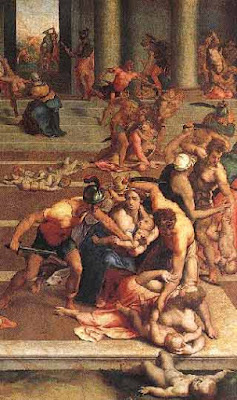St. Sylvester I

St Sylvester, whom God appointed to govern his holy church in the first years of her temporal prosperity and triumph over her persecuting enemies, was a native of Rome and son to Rufinus and Justa. According to the general rule with those who are saints from their cradle, he received early and in his infancy the strongest sentiments of Christian piety from the example, instructions, and care of a virtuous mother, who for his education in the sound maxims and practice of religion, and in sacred literature, put him young into the hands of Charitius, or Carinus, a priest of an unexceptionable character and great abilities. Being formed under an excellent master, he entered among the clergy of Rome and was ordained priest by Pope Marcellinus, before the peace of the church was disturbed by Diocletian and his associate in the empire. His behaviour in those turbulent and dangerous times recommended him to the public esteem, and he saw the triumph of the cross by the victory which Constantine...























